Topics
Category
Era
Eastman, Charles Alexander (Ohiyesa), (1858–1939)
Famed author and lecturer Charles Eastman (Ohiyesa) was raised in a traditional Dakota manner until age fifteen, when he entered Euro-American culture at his father's request. He spent the rest of his life moving between Native American and settler-colonist worlds, achieving renown but never financial security.
The boy later known as Charles Alexander Eastman was born on February 19, 1858, near Redwood Falls, Minnesota. His mother, Wakan Tanka Win (Great Spirit Woman, also known as Mary Nancy Eastman), daughter of well-known painter Seth Eastman, only survived her son's birth by a few months, so he was called Hakadah (the Pitiful Last). His paternal grandmother, Uncida, raised him, first in Minnesota and then, after the U.S.–Dakota War, in Canada, where his family had fled to safety.
In Canada, Hakadah was renamed Ohiyesa (the Winner) following a victory by his band in a lacrosse game. He was instructed in traditional Dakota lifeways by his grandmother and uncle, Mysterious Medicine (Pejuta Wakan). Ohiyesa's father, Ite Wakanhdi Ota ([Face of] Many Lightnings), and older brothers were thought killed in the aftermath of the U.S.–Dakota War. However, they had survived, and in 1873, Ite Wakanhdi Ota, then called Jacob Eastman, traveled north to find his youngest son and bring him back to the United States.
Ohiyesa was shocked by his father's sudden reappearance and request that he give up traditional Dakota ways. But Ohiyesa agreed to follow his father to his homestead in Flandreau, Dakota Territory, and adopt white ways, taking the name Charles Alexander Eastman.
In Flandreau, Eastman started formal schooling, which he continued at various institutions for the next seventeen years. He moved from Native American schools such as Santee Normal in Nebraska to all-white colleges such as Beloit and Dartmouth. He completed his education in 1890 with a medical degree from Boston Medical School.
Eastman wanted to give back to his community as a reservation physician, so he applied to the Bureau of Indian Affairs and received an appointment to Pine Ridge Reservation in South Dakota. At Pine Ridge, he met Elaine Goodale, a teacher and published author, and they were married in 1891.
Eastman arrived at Pine Ridge in November 1890, just before the massacre of Lakota people at Wounded Knee on December 29. As the reservation's resident physician, he provided medical assistance to the massacre's few survivors and found his confidence in white culture severely shaken. Eastman's time at Pine Ridge was troubled overall and lasted only until 1893, when he left because of conflict with the Indian agent.
Eastman and his wife then moved to St. Paul, where he attempted to set up a private medical practice. Unsuccessful, he took a job with the YMCA as supervisor of their Native programs in the western United States and Canada.
He tried reservation medical practice again in 1900, at Crow Creek Reservation, but resigned after only two years due to conflict with his supervisors. In 1903 he was offered another job within the Indian service: to assist Dakota in establishing family names that would translate well into English and could be used legally. He continued this work for six years.
In 1902, Eastman became a published author. His first book, Indian Boyhood, is a compilation of stories he had been telling his own children about his childhood. The book was immediately popular. Encouraged by its success, Eastman continued to write for children and adults. He published thirteen books in all, two co-written with his wife, who served as his editor.
Largely because of his publishing success, Eastman became a noted speaker and traveled widely. In 1910, he took a job with the Boy Scouts of America as their Native advisor. Inspired by this experience, he opened a summer camp for children in New Hampshire that he and his family ran from 1915 to 1921.
In 1921, Eastman and his wife permanently separated. During the remaining eighteen years of his life, Eastman continued to lecture but no longer published. He increasingly withdrew from white society, building himself a small cabin in the woods of upstate New York, where he spent most of his time. He died of heart failure in 1939 while visiting his son, also named Ohiyesa, in Detroit, Michigan.
Bibliography
Anderson, Peter. Charles Eastman: Physician, Reformer and Native American Leader. Chicago: Children's Press, 1992.
Badt, Karin Luisa. Charles Eastman: Sioux Physician and Author. New York: Chelsea House Publishers, 1995.
Eastman, Charles Alexander (Ohiyesa). From the Deep Woods to Civilization. 1916. Edited by A. LaVonne Brown Ruoff. Chicago: R.R. Donnelley and Sons Company, 2001.
Karttunen, Frances E. "Three Civil Servants," Chap. 2. In Between Worlds: Interpreters, Guides and Survivors. New Brunswick, NJ: Rutgers University Press, 1994.
Sargent, Theodore D. The Life of Elaine Goodale Eastman. Lincoln: University of Nebraska Press, 2005.
Wilson, Raymond. Ohiyesa: Charles Eastman, Santee Sioux. Urbana: University of Illinois Press, 1983.
Related Resources
Primary
M346
Indian Rights Association Papers, 1864–1973
Manuscript Collection (Microfilm), Minnesota Historical Society, St. Paul
Description: Papers documenting the activities of the Indian Rights Association, including some authored by Elaine Goodale Eastman.
Eastman, Charles Alexander (Ohiyesa). Indian Boyhood. New York: McClure, Phillips and Co., 1902. Reprint, New York: Dover Publications, 1971.
http://www.gutenberg.org/ebooks/337
——— . Indian Child Life. Boston: Little, Brown, 1915.
http://www.gutenberg.org/ebooks/25907
——— . Indian Heroes and Great Chieftains. Boston: Little, Brown and Company, 1918.
http://www.gutenberg.org/ebooks/336
——— . Indian Scout Talks. Boston: Little, Brown, 1914. Reprint, New York: Dover, 1974.
——— . The Indian Today: The Past and Future of the First American. Garden City, NY: Doubleday, Page and Company, 1915.
http://www.gutenberg.org/ebooks/27448
——— . "Life and Handicrafts of the Northern Ojibwas." Southern Workman 40 (1911): 273–278.
——— . The Soul of the Indian. Boston: Houghton, Mifflin Company, 1911.
http://www.gutenberg.org/ebooks/340
——— . "The Story of the Little Big Horn." Chautauquan 31 (July 1900): 353–358.
Eastman, Charles Alexander (Ohiyesa) and Elaine Goodale Eastman. Wigwam Evenings: Sioux Folk Tales Retold. Chicago: E.M. Hale, 1937.
http://www.gutenberg.org/ebooks/28099
Hitchcock, H.M. "An Indian Returns Home." Minneapolis Journal, September 28, 1930.
Secondary
Coleman, Michael C. "Motivations of Indian Children at Missionary and U.S. Government Schools, 1860–1918: A Study Through Published Reminiscences." Montana 40, no. 1 (Winter 1990): 30–45.
Copeland, Marion W. Charles Alexander Eastman (Ohiyesa). Boise, ID: Boise State University, 1978.
Eastman, Charles Alexander, and Hiram Melville Hitchcock. "Additional Genealogical Notes Regarding the Ancestry of Dr. Charles A. Eastman, a Minnesota Mdewakanton Dakota." Minnesota Archaeologist 12, no. 1 (Jan. 1946): 7–11.
Heflin, Ruth J. "The Brave Thing to Do: Charles Eastman's Warpath to the Creation of a New Literary Form," Chap. 2 in "I Remain Alive: The Sioux Literary Renaissance." Syracuse, NY: Syracuse University Press, 2000.
Kelsey, Penelope Myrtle. "Charles Eastman's Role in Resistance Literature: A 'Real Indian' to the Boy Scouts," Chap. 2 in Tribal Theory in Native American Literature: Dakota and Haudenosaunee Writing and Indigenous Worldviews. Lincoln: University of Nebraska Press, 2008.
Lee, Betsy. Charles Eastman. Minneapolis: Dillon Press, 1979.
Lopenzina, Drew. "'Good Indian': Charles Eastman and the Warrior as Civil Servant." American Indian Quarterly 27, no. 3 and 4 (Summer and Fall 2003): 727–757.
Martinez, David. Dakota Philosopher: Charles Eastman and American Indian Thought. St. Paul: Minnesota Historical Society Press, 2009.
Murphy, Nora. "Starting Children on the Path to the Past: American Indians in Children's Historical Fiction." Minnesota History 57, no. 6 (Summer 2001): 284–295.
http://collections.mnhs.org/MNHistoryMagazine/articles/57/v57i06p284-295.pdf
Pratt, Richard Henry. Battlefield and Classroom: Four Decades with the American Indian, 1867–1904. Edited by Robert M. Utley. New Haven, CT: Yale University Press, 1964.
Wilson, Raymond. "Forty Years to Judgment: The Santee Sioux Claims Case." Minnesota History 47, no. 7 (Fall 1981): 284–291.
http://collections.mnhs.org/MNHistoryMagazine/articles/47/v47i07p284-291.pdf
——— . "The Writings of Ohiyesa: Charles Alexander Eastman, M.D., Santee Sioux." South Dakota History 6, no. 1 (Winter 1975): 55–73
Related Images
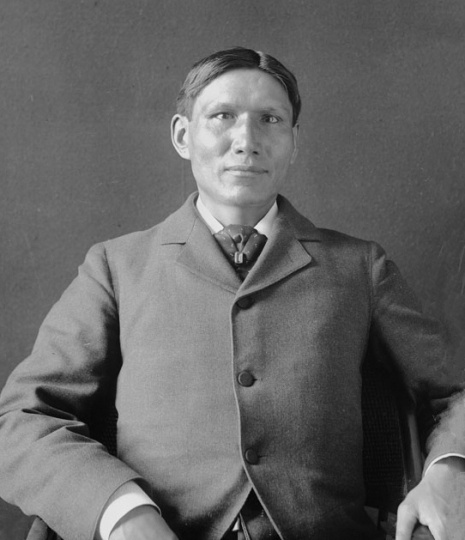
Charles Eastman (Ohiyesa), 1919
Holding Location
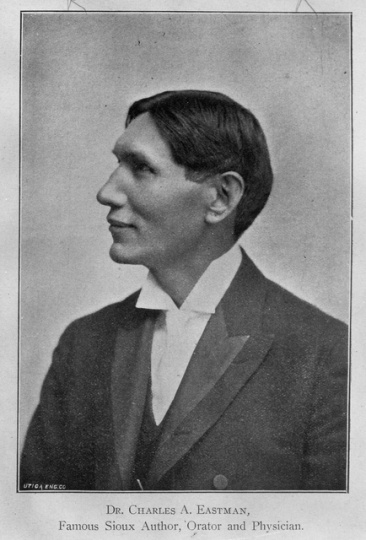
Dr. Charles A. Eastman
Holding Location
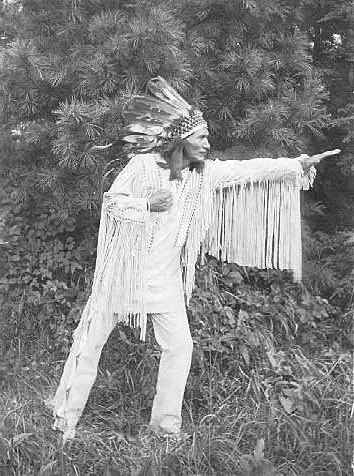
Dr. Charles A. Eastman, at the estate of Mr. Ward Burton
Holding Location
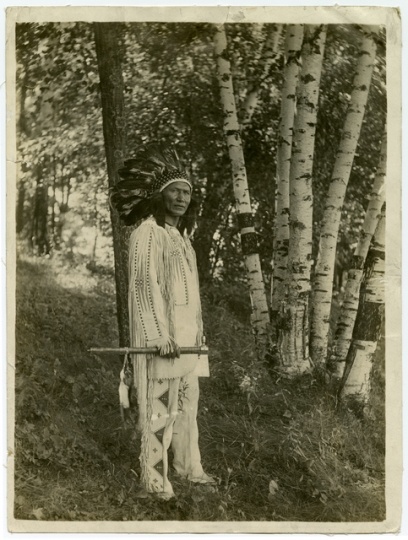
Dr. Charles A. Eastman, at the estate of Mr. Ward Burton
Holding Location
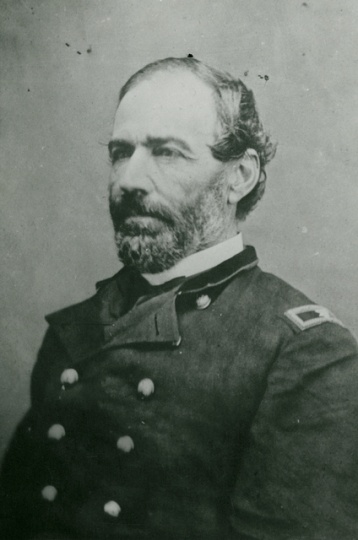
Seth Eastman
Public domain
Holding Location
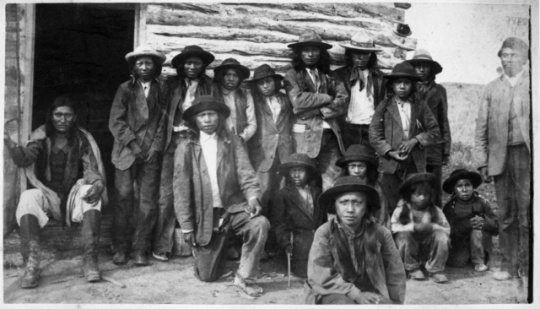
Students of Santee Normal Training School
Holding Location
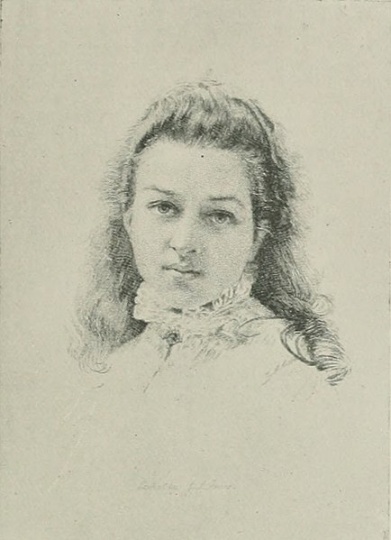
Elaine Goodale Eastman
Holding Location
More Information
.jpeg)
Charles Eastman (Ohiyesa) in Dakota regalia
Holding Location
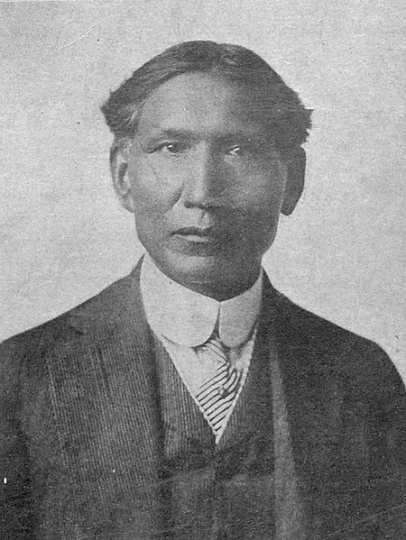
Charles Eastman (Ohiyesa)
Holding Location
More Information
Related Articles
Turning Point
In 1873, Ohiyesa leaves everything he knows, including his traditional Dakota ways, and starts a new life with his father in the United States, taking the name Charles Alexander Eastman.
Chronology
1858
1873
1890
1891
1900
1902
1903
1910
1915
1921
1939
Bibliography
Anderson, Peter. Charles Eastman: Physician, Reformer and Native American Leader. Chicago: Children's Press, 1992.
Badt, Karin Luisa. Charles Eastman: Sioux Physician and Author. New York: Chelsea House Publishers, 1995.
Eastman, Charles Alexander (Ohiyesa). From the Deep Woods to Civilization. 1916. Edited by A. LaVonne Brown Ruoff. Chicago: R.R. Donnelley and Sons Company, 2001.
Karttunen, Frances E. "Three Civil Servants," Chap. 2. In Between Worlds: Interpreters, Guides and Survivors. New Brunswick, NJ: Rutgers University Press, 1994.
Sargent, Theodore D. The Life of Elaine Goodale Eastman. Lincoln: University of Nebraska Press, 2005.
Wilson, Raymond. Ohiyesa: Charles Eastman, Santee Sioux. Urbana: University of Illinois Press, 1983.
Related Resources
Primary
M346
Indian Rights Association Papers, 1864–1973
Manuscript Collection (Microfilm), Minnesota Historical Society, St. Paul
Description: Papers documenting the activities of the Indian Rights Association, including some authored by Elaine Goodale Eastman.
Eastman, Charles Alexander (Ohiyesa). Indian Boyhood. New York: McClure, Phillips and Co., 1902. Reprint, New York: Dover Publications, 1971.
http://www.gutenberg.org/ebooks/337
——— . Indian Child Life. Boston: Little, Brown, 1915.
http://www.gutenberg.org/ebooks/25907
——— . Indian Heroes and Great Chieftains. Boston: Little, Brown and Company, 1918.
http://www.gutenberg.org/ebooks/336
——— . Indian Scout Talks. Boston: Little, Brown, 1914. Reprint, New York: Dover, 1974.
——— . The Indian Today: The Past and Future of the First American. Garden City, NY: Doubleday, Page and Company, 1915.
http://www.gutenberg.org/ebooks/27448
——— . "Life and Handicrafts of the Northern Ojibwas." Southern Workman 40 (1911): 273–278.
——— . The Soul of the Indian. Boston: Houghton, Mifflin Company, 1911.
http://www.gutenberg.org/ebooks/340
——— . "The Story of the Little Big Horn." Chautauquan 31 (July 1900): 353–358.
Eastman, Charles Alexander (Ohiyesa) and Elaine Goodale Eastman. Wigwam Evenings: Sioux Folk Tales Retold. Chicago: E.M. Hale, 1937.
http://www.gutenberg.org/ebooks/28099
Hitchcock, H.M. "An Indian Returns Home." Minneapolis Journal, September 28, 1930.
Secondary
Coleman, Michael C. "Motivations of Indian Children at Missionary and U.S. Government Schools, 1860–1918: A Study Through Published Reminiscences." Montana 40, no. 1 (Winter 1990): 30–45.
Copeland, Marion W. Charles Alexander Eastman (Ohiyesa). Boise, ID: Boise State University, 1978.
Eastman, Charles Alexander, and Hiram Melville Hitchcock. "Additional Genealogical Notes Regarding the Ancestry of Dr. Charles A. Eastman, a Minnesota Mdewakanton Dakota." Minnesota Archaeologist 12, no. 1 (Jan. 1946): 7–11.
Heflin, Ruth J. "The Brave Thing to Do: Charles Eastman's Warpath to the Creation of a New Literary Form," Chap. 2 in "I Remain Alive: The Sioux Literary Renaissance." Syracuse, NY: Syracuse University Press, 2000.
Kelsey, Penelope Myrtle. "Charles Eastman's Role in Resistance Literature: A 'Real Indian' to the Boy Scouts," Chap. 2 in Tribal Theory in Native American Literature: Dakota and Haudenosaunee Writing and Indigenous Worldviews. Lincoln: University of Nebraska Press, 2008.
Lee, Betsy. Charles Eastman. Minneapolis: Dillon Press, 1979.
Lopenzina, Drew. "'Good Indian': Charles Eastman and the Warrior as Civil Servant." American Indian Quarterly 27, no. 3 and 4 (Summer and Fall 2003): 727–757.
Martinez, David. Dakota Philosopher: Charles Eastman and American Indian Thought. St. Paul: Minnesota Historical Society Press, 2009.
Murphy, Nora. "Starting Children on the Path to the Past: American Indians in Children's Historical Fiction." Minnesota History 57, no. 6 (Summer 2001): 284–295.
http://collections.mnhs.org/MNHistoryMagazine/articles/57/v57i06p284-295.pdf
Pratt, Richard Henry. Battlefield and Classroom: Four Decades with the American Indian, 1867–1904. Edited by Robert M. Utley. New Haven, CT: Yale University Press, 1964.
Wilson, Raymond. "Forty Years to Judgment: The Santee Sioux Claims Case." Minnesota History 47, no. 7 (Fall 1981): 284–291.
http://collections.mnhs.org/MNHistoryMagazine/articles/47/v47i07p284-291.pdf
——— . "The Writings of Ohiyesa: Charles Alexander Eastman, M.D., Santee Sioux." South Dakota History 6, no. 1 (Winter 1975): 55–73









.jpeg?width=200&height=200&name=Charles_Eastman_(Ohiyesa).jpeg)
